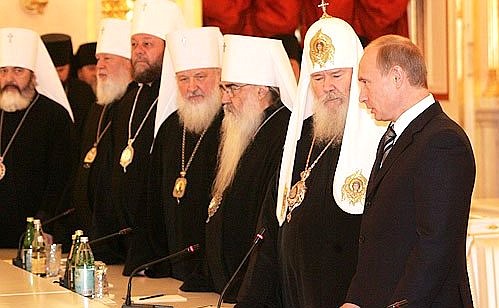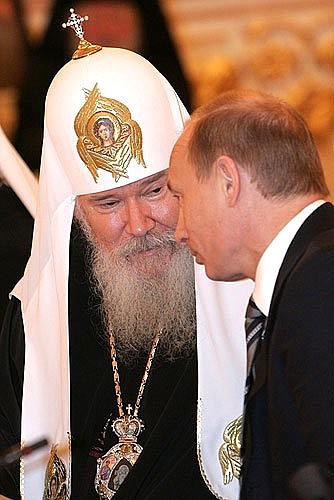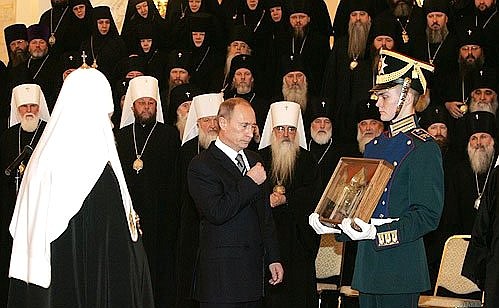The Russian patriarchate was first established during the reign of Tsar Fyodor Ioannovich in 1589 and signalled the eastern patriarchs’ recognition of the Russian Orthodox Church’s independence. Peter the Great abolished the patriarchate and transferred its functions to the tsar. Two-hundred years later, in 1917, when the state’s very foundations were collapsing, the Church decided to restore the patriarchate. Metropolitan of Moscow and Kolomna Tikhon (Belavin) was elected Patriarch of All Russia, was inaugurated in the Cathedral of Christ the Saviour on November 18, 1917, and was canonised in 1989.
Speaking at a meeting with Russian Orthodox clergy to mark the ninetieth anniversary of the patriarchate’s restoration, President Vladimir Putin said that the state and the Church have a lot of scope for working together on addressing many of the nation’s issues.
The President named the demographic situation as being among the most urgent problems that the state and religious organisations need to address. Reviving family values and changing people’s attitudes to the institution of the family and issues regarding children’s education is possible only through a consolidated effort from the whole of society. Russia’s traditional religions have a very important role to play in this work, Mr Putin said.
The President said that religious education is a matter of principle importance. The State Duma has passed in the first reading amendments to the law on education and freedom of conscience giving religious educational establishments the right to have their education programmes accredited in accordance with state education standards and the right to issue diplomas recognised by the state. In this respect, the President said he is in favour of introducing religious education in Russian schools, but stressed that such education should encompass all of the country’s traditional religions and not be restricted to just one religion.
During the meeting, the President handed over to Patriarch of Moscow and All Russia Alexii II a fragment of the Robe of Christ, one of the most revered holy Christian relics from the Moscow Kremlin Museum’s collection. The Robe of Christ was divided into several pieces during the seventeenth century, which were located in Yaroslavl, Kostroma, Kiev, and in the Peter and Paul Cathedral in St Petersburg. Peter the Great took two of the fragments with him to his new capital and placed them in the Peter and Paul Cathedral and the Winter Palace. Tiny pieces of the fragments were placed in the cross during the baptism of the imperial family’s children. Until recently, a fragment of the Robe of Christ was kept in a silver hinged icon in the Moscow Kremlin’s Assumption Cathedral.


